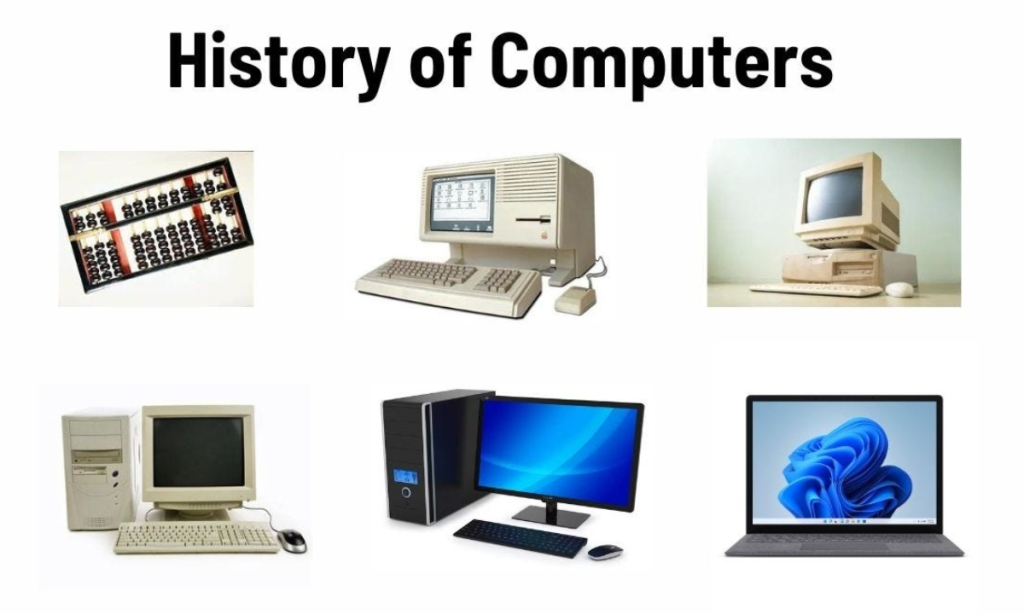Computers have developed over many years. The development can be divided into different generations based on the technology used.
Early Calculating Devices
- Abacus (about 3000 B.C.)
- First known calculator.
- Used beads to do basic math (add, subtract).
- Pascal’s Calculator (1642)
- Invented by Blaise Pascal.
- Could add and subtract numbers using gears.
- Analytical Engine (1837)
- Designed by Charles Babbage (called the “Father of the Computer”).
- It had memory and could do any calculation.
- Never fully built, but it was the idea behind modern computers.
- Lady Ada Lovelace
- She wrote the first program for Babbage’s machine.
- She is known as the first computer programmer.
First Electronic Computers
- ENIAC (1946)
- First general-purpose electronic computer.
- Very large and used vacuum tubes.
- Used for military calculations.
- UNIVAC (1951)
- First commercial computer.
- Used in business and government.
Generations of Computers
| Generation | Time Period | Technology Used | Features |
|---|---|---|---|
| 1st | 1940–1956 | Vacuum tubes | Very big, slow, and produced heat |
| 2nd | 1956–1963 | Transistors | Smaller, faster, cheaper |
| 3rd | 1964–1971 | Integrated Circuits (ICs) | More reliable, better performance |
| 4th | 1971–Present | Microprocessors | Very fast, small size, low cost |
| 5th | Present & Beyond | Artificial Intelligence | Smart computers, learning capabilities |
Summary
- Computers have evolved from manual tools like the abacus to modern AI-based systems.
- Each generation brought improvements in size, speed, and performance.
- Today’s computers are smarter and more powerful than ever.

